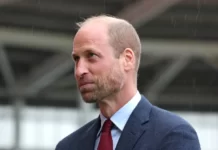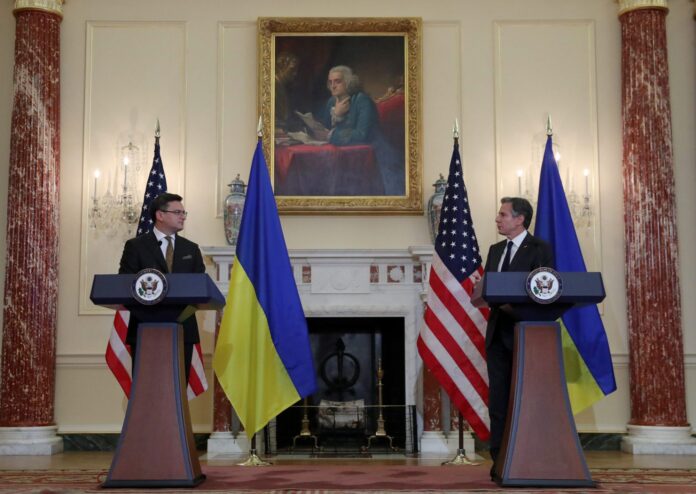After having become independent from the erstwhile USSR, the USA recognised Ukraine on 25 December 1991, and it was upgraded to embassy level on 21 January 1992 to move further in a positive direction in the larger interests of both countries, and in following years the USA defended Ukraine on several occasions in international fora where it pleaded in favour of the country while meeting with diplomats of other nations and thus, a general environment for Ukraine was created by the USA in the Western media and elsewhere.
By doing this the USA earned a good name for itself in Ukraine and according to an estimate about 80 percent of the population expressed their views in favour of the USA in 2002, although with a declining trend as 60 percent favoured it in 2011. Earlier in the recession in 1999 the Government of Ukraine began taking steps to make essential changes in its economy for maximum benefit and, as such, an era of good relations commenced in their relationship with other democratic countries of the region under the leadership of USA. In addition, The US welcomed Ukraine as a democratic country in the comity of nations and desired to develop it as an improving economy free from Russian threat or aggression, reform and strengthen democratic institutions with minimum corruption, congenial to smooth and sustained growth and competition.
Its avowed strategic objectives in the country did not allow Washington to recognise Russian annexation of Crimea and it always hoped to find a resolution for the Russia-instigated conflict in eastern Ukraine. Thus, in initial years and thereafter, relations between them remained more strategic than diplomatic and Washington always tried to keep Ukraine in the fraternity of the Euro-Atlantic community.
Relations between the two started on a firm foundation and steps taken for reforms in the economy were welcomed by the USA and to boost the overall economic condition of Ukraine, in 1992, it passed a pro-development programme for all states who became independent from the Soviet Union called, Freedom for Russia and Emerging Eurasian Democracies and Open Markets (FREEDOM) Support Act and Ukraine became the primary recipient of this assistance scheme. Primarily the US help centred around the political as well as economic development of the country and shared a number of organisations, such as the United Nations, the Organisation for Security and Cooperation in Europe, the International Monetary Fund, the World Bank, the World Trade Organisation, and the Euro-Atlantic Partnership Council.
Since the beginning of diplomatic relations, the two have enjoyed economic relations by signing various agreements of mutual interest in 2006, 2007. In line with this, the Threshold Programme signed in December 2006 aimed to reduce corruption in the public sector through civil society monitoring and implementation of ethical administrative standards.
As a principle, the USA considered Russian actions and interferences against the established international norms, rules and practices because borders and territorial integrity of a state cannot be changed by force or violence and in a democracy, it is the inherent right of a nation or its citizens to make their country’s decisions and determine the future of the country. These are the fundamental rules/principles of international relations to which all members of the international community are bound to obey to have a developed, peaceful and secured world order. Thus, they considered it a challenge for the whole community, and in such a situation, diplomacy is the only purposeful way to resolve the crisis.
The year 2014 proved an important year in the current trouble-torn history of Ukraine when the rule of a pro-Russian Federation government came to an end and a pro-US/Western alliance government took over the reins of administration, signa3ling a red alert for both the USA and Russia.
While in the background of old competition and rivalry, Russia apprehended a security threat for itself and began active support to protesters of eastern Ukraine, the USA, having learnt the lessons of Crimea annexation to Russia in 2014, started massive help in diverse fields to check Russian influence/dominance in Ukraine and around it.
In the context, a recent report revealed that since 2014 the USA had committed more than $5.4 billion in assistance to Ukraine which included items of security and non-security, apart from providing loan guarantees totalling $3 billion. It has been a consistent policy of the USA to extend life-saving support to otherwise displaced persons and help especially those who were or are victims of Russian aggression.
The US aid mission 2019-2024 Country Development Coordination Strategy clearly calls for a focus on a two-fold programme: promotion of economic development and energy security as well as anti-corruption efforts, to make Ukraine a self-reliant nation, keeping in view the regional stability, future of Europe and strength of the USA. Earlier, US President Donald Trump had supported Ukraine continuously and Joe Biden, after being sworn in as President, met his Ukrainian counterpart on 15 September 2021, and reiterated his country’s commitment to counter Russian aggression and fully supported Ukraine’s ways towards Euro-Atlantic integration. Taking the US commitment and efforts seriously, Vladimir Putin, the Russian President, refreshed its security structures along with increasing the number of armed forces on the Ukraine border and in the surrounding areas.
With continuing tension and armed conflict since 2014 in eastern Ukraine, it aggravated further in October 2021 when Russia moved lots of troops and equipment near the border as certified by the US intelligence officials and social media reports. After heavy war preparations, in mid-December, the Foreign Ministry of Russia issued a set of demands which included a ban on Ukraine’s joining the North Atlantic Treaty Organisation (NATO) as well as reduction of NATO troops and military equipment in the eastern part of the country. In response to Russian calls, the USA and NATO not only rejected their demands, but threatened the Kremlin with retaliation, if Ukraine was invaded. As a precautionary step, in early February, American President Joe Biden ordered the stationing of about 3000 troops in the bordering NATO regions of Poland and Romania, although he said it clearly that US troops would not enter Ukraine. Tension and conflict are going on in eastern Ukraine in between the negotiations among parties concerned to reach a diplomatic deal and defuse the present crisis of Ukraine. However, that did not stop Russia from taking military action.























